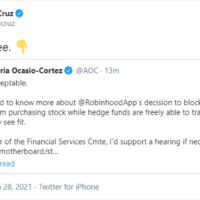A “short” is when you borrow a stock from a broker and sell it immediately at it’s current price. Then you hope the stock’s price falls such that you can buy the stock back at a lower price and return the shares you borrowed to your broker, but keeping the difference.
Example: Let’s say I want to short XYZ which has a current price of $10. I borrow 1 share and sell it immediately at $10. I have $10 now but I owe my broker the 1 share I borrowed. Then let’s say the price of XYZ drops to $7. I now decide to “cover” (buy it back) my short position and buy 1 share at $7 and return the 1 borrowed share to my broker. I made $10 when I sold and only had to pay $7 to buy it back lower, so my profit is the $3 difference.
But now let’s say that instead of the XYZ price dropping to $7, it goes to $15. I still need to return the 1 borrowed share to my broker, except now it’s going to cost me alot more to buy it back. If I buy it back at $15 so I can return the borrowed shares, my losses will be the $5 difference between selling at $10 and rebuying at $15. Since the price can rise indefinately, my potential losses as a short seller are unlimited. At some point I have to buy it back to return the shares I borrowed. The more the price rises, the bigger my losses.
